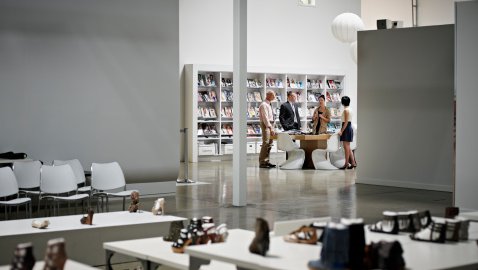Elizabeth Canon of Fashion’s Collective explains how & why retailers should make strategic shifts based on new consumer behaviours

Elizabeth Canon of Fashion’s Collective explains how & why retailers should make strategic shifts based on new consumer behaviours
Elizabeth Canon of Fashion’s Collective explains how & why retailers should make strategic shifts based on new consumer behaviours
Showrooming has become a growing point of contention in our industry. As consumer behavior becomes more and more accustomed to using the in-store experience as a point of research and brand experience, only to then purchase online, brands and retailers must pivot their in-store and digital strategies.
Underscored by the economic recession and the prominence of the web, people began to educate themselves on product traits, brand identity and, most importantly, price comparisons. The web was used as a tool to ensure a customer was getting the best price on an item they desired.
The problem this posed for brands, of course, was that strictly online retailers often had the ability to offer lower price points, as there was less overhead involved in their businesses. Customers would see, touch and feel the product in the store and then purchase elsewhere online.
“ 72% of consumers engage in showrooming because the price was better online ”
And the numbers only underscore this shift. Research shows the number one reason for showrooming is price (72% of consumers engage in showrooming because the price was better online).
In particular, the fashion apparel and accessories category has an audience share of a whopping 43% of customers who purchase online after showrooming. This category is second only to consumer electronics (which comes in at 63%). On the other end of the spectrum, jewelery and watches carry a 16% showrooming statistic. (Source: Statista)
Recently,we’ve seen select retailers implement tactics in an attempt to combat showrooming. For example, Vera Wang instituted a “fitting fee” in their Shanghai bridal boutique (which was recently revoked due to customer backlash).
Separately, the store within a store concept allows retailers like Best Buy, Bloomingdale’s, ABC Carpet, and JCPenney to profit from their real estate alone, and works as a proposed solution to the losses faced due to showrooming.
But the future of showrooming is not just about price comparison. The shift in consumer behavior is currently evolving to a state where they not only seek value, but also a novel brand and product experience in-store.
“ The future of showrooming is not just about price comparison ”
Take Warby Parker for example, whose initial business was initiated online, with a dedicated ecommerce platform to convey the brand story and sell product. The company then created a showroom within their corporate offices and made it open to the public on the weekends. Customers would stop by, try on frames and place their orders online while in-store.
More recently, Warby Parker had a dedicated pop-up storefront they called the Warby Parker Annex, which hosted ongoing in-store events like “farm-fresh snacks”, mimosas at brunch time, beer pong and live music, and today they boast a new retail storefront on Greene Street. The consumer that was first on the hunt for a good deal online (affordable, stylish frames), now has the ability to experience the product and the brand in a brick and mortar environment.
This shift requires that brands and retailers revise their digital and retail strategies in order to find ways to embrace consumer behavior, rather than fight against it.
“ Brands must revise their digital & retail strategies to find ways to embrace consumer behavior ”
Here are four key considerations when pivoting your retail strategy:
1. Find appropriate ways to leverage technology in the brick and mortar storefront to deliver added convenience and a novel shopping experience
2. Reward consumers with a distinctive product and a special degree of customer service in-store
3. Link the store experience through to the online experience in seamless, convenient and engaging ways (This applies to merchandising, content, promotions, etc)
4. Give your sales associates instant access to the information and inventory your customers are exposed to online elsewhere
To further investigate technology on Luxury Society, we invite your to explore the related materials as follows:
– The 3D Printing Revolution: What it Means for Fashion & Luxury
– The New Customer Service Means Offering Convenience
– The Latest Digital: Baselworld, Zegna & Ferrari










